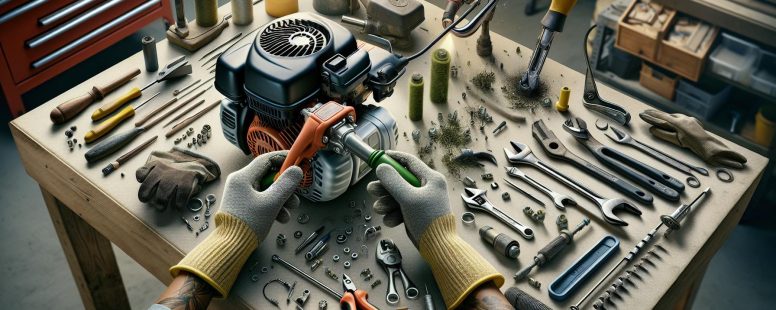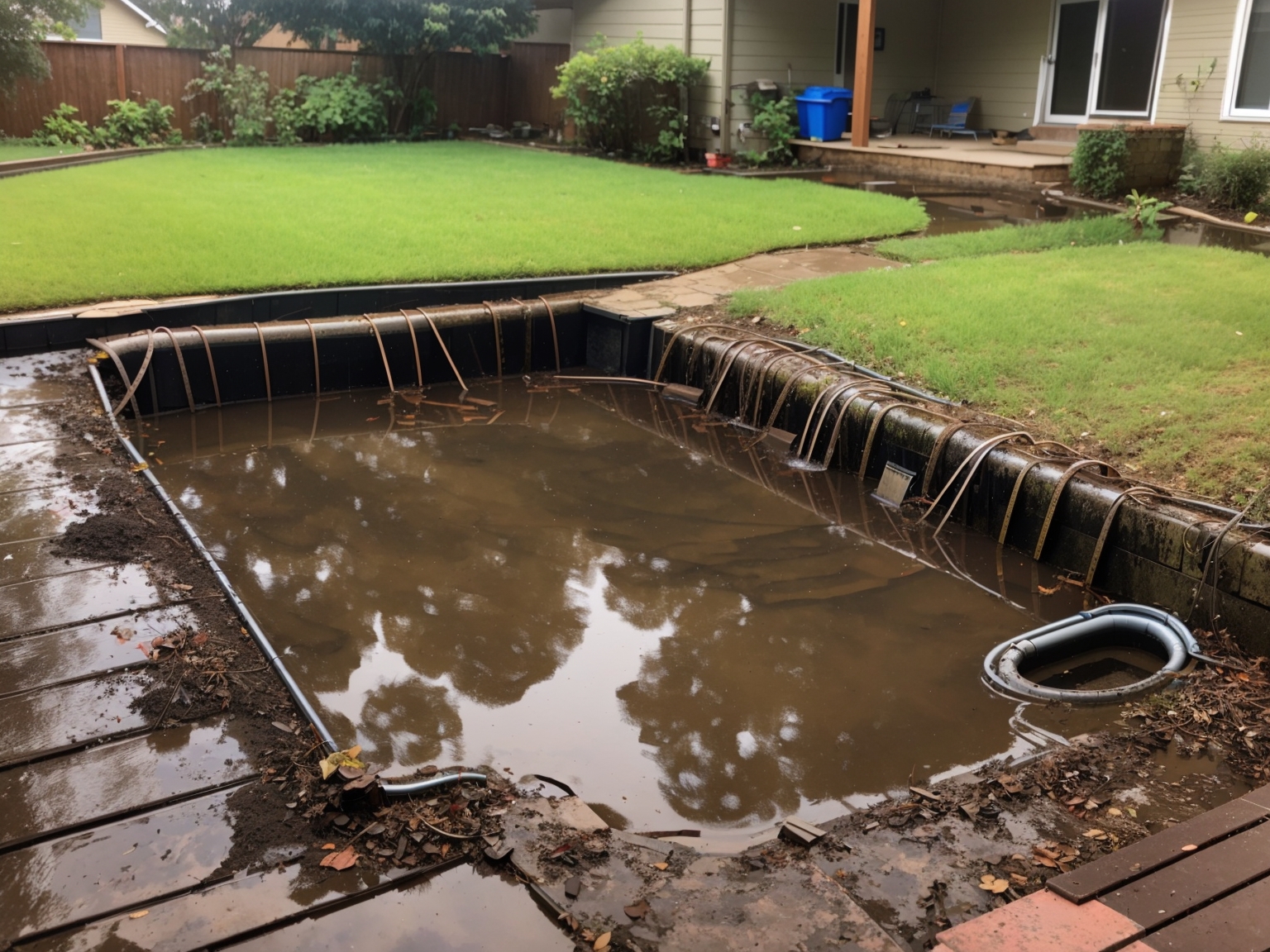Understanding Fuel Choices for Weed Eaters: Can They Run on Regular Gas?
Understanding Weed Eaters and Fuel Types
Transitioning from the previous section, let’s investigate deeper into weed eaters’ fuel requirements. Unearthing facts about their preferred gas types could make a world of difference in your gardening routine.
Types of Weed Eaters
Primarily, there are three kinds of weed eaters: electric-powered, battery-operated, and gas-fueled models. Electric variants plug directly into an outlet – no fuss over fuel at all with these guys! Battery-run versions carry rechargeable lithium-ion batteries that can be juiced up after each use; again no worries about any kind of liquid fuel.
Gas-powered weed whackers stand alone in requiring specific types or blends for optimal operation—primarily because they rely on internal combustion engines to function effectively. Regular gasoline? Premium-grade ethanol-free petrol? A precise mix ratio blend?
Knowing what goes inside helps you maintain peak performance and longevity—if the wrong type is used consistently it might lead to faster wear-out or even permanent damage!
Importance of Choosing the Right Fuel
Choosing suitable juice for your machine isn’t just about ensuring smooth operations—it’s also crucially linked to its lifespan itself.
Opting for regular unleaded gasoline (87 octane) mixed correctly with two-stroke engine oil would suffice most domestic grade equipment—providing ample power while keeping internals clean enough during combustion cycles so minimizing deposits build-up.
But if we’re talking commercial-grade gear operating under intense conditions—they often demand higher-octane non-ethanol fuels precisely blended with premium synthetic oils—a richer concoction promising superior lubrication along prolonged high revs periods besides cleaner burns leaving fewer residues behind.
Remember this—the right choice doesn’t merely contribute towards seamless functioning today but safeguards against potential breakdowns tomorrow as well!
Do Weed Eaters Take Regular Gas?
Let’s investigate into the specifics of fueling your weed eaters. While we’ve already explored that gas-powered models require certain types of fuels, it’s vital to understand if regular gas fits the bill.
Considering Manufacturer’s Specifications
Remember, manufacturer specifications provide a guide on which type of gasoline suits your equipment best. For instance, most brands recommend using unleaded 87-octane or higher as well as two-stroke engine oil for domestic-grade devices like yours. A mix ratio often prescribed is 50:1 (gasoline:oil), but check specific instructions before proceeding. Be sure to use fresh fuel; older than one month could harm engines due to ethanol content degradation over time.
Impact of Using Regular Gas in Weed Eaters
What happens when you use regular gas? Here are some points:
- Performance Issues: Engines may run hotter and rougher with straight petrol.
- Damage Potential: Over time, this can lead to spark plug fouling and even severe damage such as piston seizure or cylinder scoring.
- Maintenance Needs Increase: More frequent maintenance checks become necessary due its potential harmful effects on internal components.
So, while it might seem convenient just filling up from the pump at home—remember there’re potential repercussions involved! The right balance between convenience and care must be struck for longevity’s sake—you’d want your trusty weed eater serving you efficiently year after year!
This section should have made things clearer about whether weed eaters take regular gas—the answer lies not only in present functionality but also future prevention measures against breakdowns.
Alternatives to Regular Gas for Weed Eaters
Transitioning from regular gas, you’ll discover a range of alternative fuels available for weed eaters. These options often offer benefits that surpass the convenience of using standard gasoline.
Benefits of Using Alternative Fuels
Alternative fuels provide several advantages over regular gas when used in weed eaters. First off, they’re specifically designed to enhance engine performance and longevity – a feature not typically associated with traditional fuel types. For instance, ethanol-free mixtures can reduce harmful deposits within your machine’s engine system.
Secondly, these specialized solutions may contain beneficial additives like stabilizers and lubricants which are absent in ordinary gasoline but crucial for maintaining an efficient running condition during prolonged periods without use or throughout seasonal changes.
Finally on our list – environment consciousness! Yes indeed; compared to conventional fossil-based petrol alternatives such as biofuels emit significantly less CO2 emissions so contributing towards a greener planet while simultaneously taking care of your backyard needs!
Maintenance Tips for Weed Eaters
Maintaining your weed eater optimally isn’t just about choosing the right fuel. It’s also critical to perform regular checks and understand proper storage methods, particularly if you plan on storing it long-term.
Regular Maintenance Checks
Ensuring that your weed eater is in top condition demands routine inspection of certain key parts. Here are three main components to check:
- Spark Plug: This small component plays a significant role in starting up your machine efficiently. Look out for any signs of wear or corrosion; replacing an old spark plug can often restore optimal performance.
- Air Filter: Clean air flow is crucial for engine health and efficiency, making regular cleaning or replacement necessary.
3.Inspect the lines: Fuel lines need periodic attention too as they may become brittle over time leading to leaks which affect both safety and operation.
Staying vigilant with these simple maintenance tasks not only enhances performance but extends equipment lifespan significantly.
Long-Term Storage Tips
For those times when you’re putting away the weed eater for months at end (like during winter), follow these steps:
1.Purge remaining fuel from tank before storage – this prevents gum deposits within carburetor ensuring smoother restarts later.
2.Lightly clean all external surfaces – removing dust, grass clippings etc helps prevent rusting while stored away
3.Lubricate moving parts slightly- keeps them operating smoothly after prolonged periods without use.
Conclusion
You’ve now got the knowledge to fuel your weed eater correctly. Remember, picking the right gas is key – and specialized fuels can offer benefits over regular gas, especially for commercial-grade models. Don’t forget that upkeep matters too! Regular maintenance checks on components like spark plugs, air filters and fuel lines will keep your machine running smoothly longer. And when it’s time to store away? Clean it up, lubricate moving parts and purge any leftover fuel from its system for best results next season. With this astute approach in mind you’re set to get maximum performance out of your weed eater while extending its lifespan too.
- Decorating Your Backyard with Homemade Birdhouses: Creative Ideas to Attract Birds & Beautify Your Garden - October 3, 2025
- Creating Stepping Stones with Kids: A Fun Backyard Project for Family Bonding and Creativity - October 3, 2025
- Where Can I Sell Pottery Locally? Best Places and Tips for Selling Handmade Ceramics - October 3, 2025




